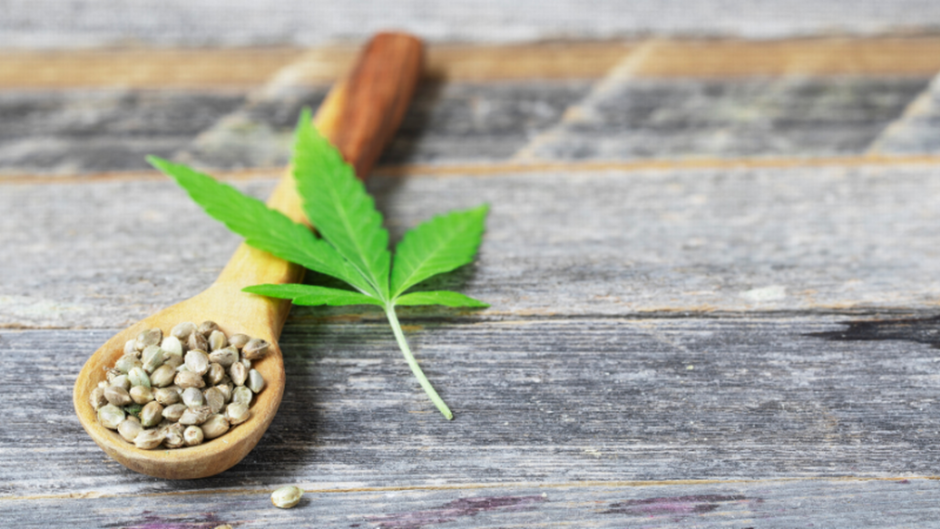In the intricate world of cannabis, terpenes play a pivotal role, contributing not only to the plant’s aroma and flavor but also influencing its therapeutic effects. This blog post delves into the fascinating realm of terpenes, exploring their diversity, the impact on cannabis seeds, and how understanding terpenes can enhance the overall cannabis experience.

ALSO READ – Understanding Feminized Cannabis Seeds and Their Benefits
Terpenes 101
Terpenes are aromatic compounds found in various plants, including cannabis. These organic molecules are responsible for the distinct scents and flavors associated with different strains. While cannabinoids like THC and CBD garner much attention, terpenes contribute significantly to the entourage effect, where the combined presence of cannabinoids and terpenes enhances the overall therapeutic effects of cannabis.
- Common Cannabis Terpenes: a. Myrcene: Known for its sedative effects, myrcene imparts earthy, musky aromas, and is prevalent in indica-dominant strains. b. Limonene: With a citrusy scent, limonene is associated with uplifting and mood-enhancing effects found in sativa-leaning strains. c. Pinene: As the name suggests, pinene offers a pine-like aroma and is believed to promote alertness and respiratory health. d. Linalool: Recognizable for its lavender scent, linalool contributes to relaxation and anti-anxiety effects.
Terpenes in Cannabis Seeds
Terpenes are not exclusive to the flowering stage of cannabis; they also play a role in the development of seeds. Understanding this influence provides insight into the potential characteristics of the future plant and the potential benefits it may offer.
- Genetic Influence: a. Parental Genetics: The terpene profile of cannabis seeds is inherited from the parent plants, influencing the aroma and flavor of the resulting plants. b. Hybridization: Crossbreeding different strains can lead to unique terpene combinations, creating novel and diverse aromas.
- Impact on Seedling Growth: a. Early Terpene Production: Even in the seedling stage, cannabis plants may produce trace amounts of terpenes, offering a preview of the aromatic profile. b. Environmental Factors: Environmental conditions during germination and early growth stages can influence terpene expression in cannabis seeds.
Aroma and Flavor Profiling
The aromatic profile of cannabis is as diverse as the plant itself. By examining the terpene content, growers and consumers alike can gain insights into the potential sensory experience offered by different strains.
- Aroma Wheel Exploration: a. Citrus: Strains rich in limonene often exhibit citrusy notes, reminiscent of lemons, oranges, or grapefruits. b. Earthy/Herbal: Myrcene-dominant strains may have earthy or herbal aromas, akin to the scents of soil, pine, or cloves. c. Floral: Linalool, with its lavender scent, contributes to strains with floral notes, creating a delicate and pleasant aroma.
- Flavor Complexity: a. Terpene Interplay: The interplay of multiple terpenes creates a complex flavor profile, influencing the taste of inhaled or ingested cannabis. b. Strain-Specific Tastes: Certain strains may have unique flavor characteristics, ranging from spicy and peppery to sweet and fruity.

Therapeutic Potential
Beyond their role in aroma and flavor, terpenes contribute to the therapeutic potential of cannabis. Understanding the specific terpenes in a strain can help individuals tailor their cannabis use to achieve desired effects.
- Entourage Effect: a. Synergistic Effects: The entourage effect occurs when cannabinoids and terpenes work together synergistically, enhancing the overall therapeutic benefits. b. Personalized Medicine: Recognizing the terpene profile of a strain allows users to choose varieties that align with their specific wellness goals.
- Targeted Effects: a. Calming Terpenes: Strains rich in myrcene and linalool may have calming effects, beneficial for stress relief and relaxation. b. Energizing Terpenes: Limonene and pinene may contribute to strains with energizing effects, promoting focus and uplifted mood.
Cultivation Practices to Enhance Terpenes
Cultivators can employ various techniques to optimize terpene production in cannabis plants, ensuring a robust aromatic profile and potential therapeutic benefits.
- Temperature and Humidity Control: a. Environmental Impact: Maintaining consistent temperature and humidity levels supports optimal terpene production during the flowering stage. b. Stress Induction: Mild stress, such as controlled temperature fluctuations, may encourage higher terpene production as a defense mechanism.
- Careful Harvesting: a. Timing Matters: Harvesting at the peak of terpene production, typically during the early stages of flowering, preserves the plant’s aromatic potential. b. Hand Trimming: Gentle hand trimming, rather than machine harvesting, helps retain delicate trichomes and terpenes.
Exploring Terpene-Rich Strains
For consumers seeking specific aromas, flavors, and therapeutic effects, exploring terpene-rich strains becomes an exciting journey. Dispensaries often provide information on the terpene profiles of different strains, aiding in informed decision-making.
- Strain-Specific Terpene Profiles: a. Database Resources: Online resources and strain databases offer information on the terpene profiles of various cannabis strains. b. Consumer Reviews: Peer reviews and experiences can provide insights into the aroma, flavor, and effects of specific terpene-rich strains.
- DIY Terpene Exploration: a. Home Cultivation: Growing cannabis at home allows enthusiasts to explore and appreciate the terpene profiles of different strains firsthand. b. Personalized Preferences: Experimenting with various strains enables individuals to discover their preferred terpene combinations.
Conclusion
Terpenes are the unsung heroes of the cannabis plant, contributing not only to its captivating aromas and flavors but also influencing the therapeutic effects users seek. Whether you’re a cultivator aiming to enhance terpene production or a consumer exploring terpene-rich strains for a personalized cannabis experience, understanding the intricate world of terpenes adds a layer of complexity and richness to the cannabis journey. As we continue to unravel the mysteries of this remarkable plant, the role of terpenes emerges as a key factor in shaping the diverse and dynamic landscape of cannabis cultivation and consumption.




